Indoor pests 101: How to identify and deal with the 10 most common indoor pests
Our expert guide to identifying and successfully banishing pesky indoor pests


There is really nothing worse than a pest invasion in your home – they disrupt the serenity of your space, introduce germs and hazards and wreak havoc on your food stores, not to mention the horror of finding a cupboard full of cockroaches or an army of ants marching around your kitchen.
If this is something you’re dealing with, we know how helpless it can make you feel, but rest assured, indoor pests can quickly become a thing of your past.
We’ve spoken to our entomology experts for tips on identifying and dealing with the 10 most common pests in the US, as well as their expert recommendations for which pest products are really worth purchasing, so, if you need to know how to get rid of fruit flies, cockroaches or rodents, our guide can make your home a pest-free paradise for good.
1. Ants
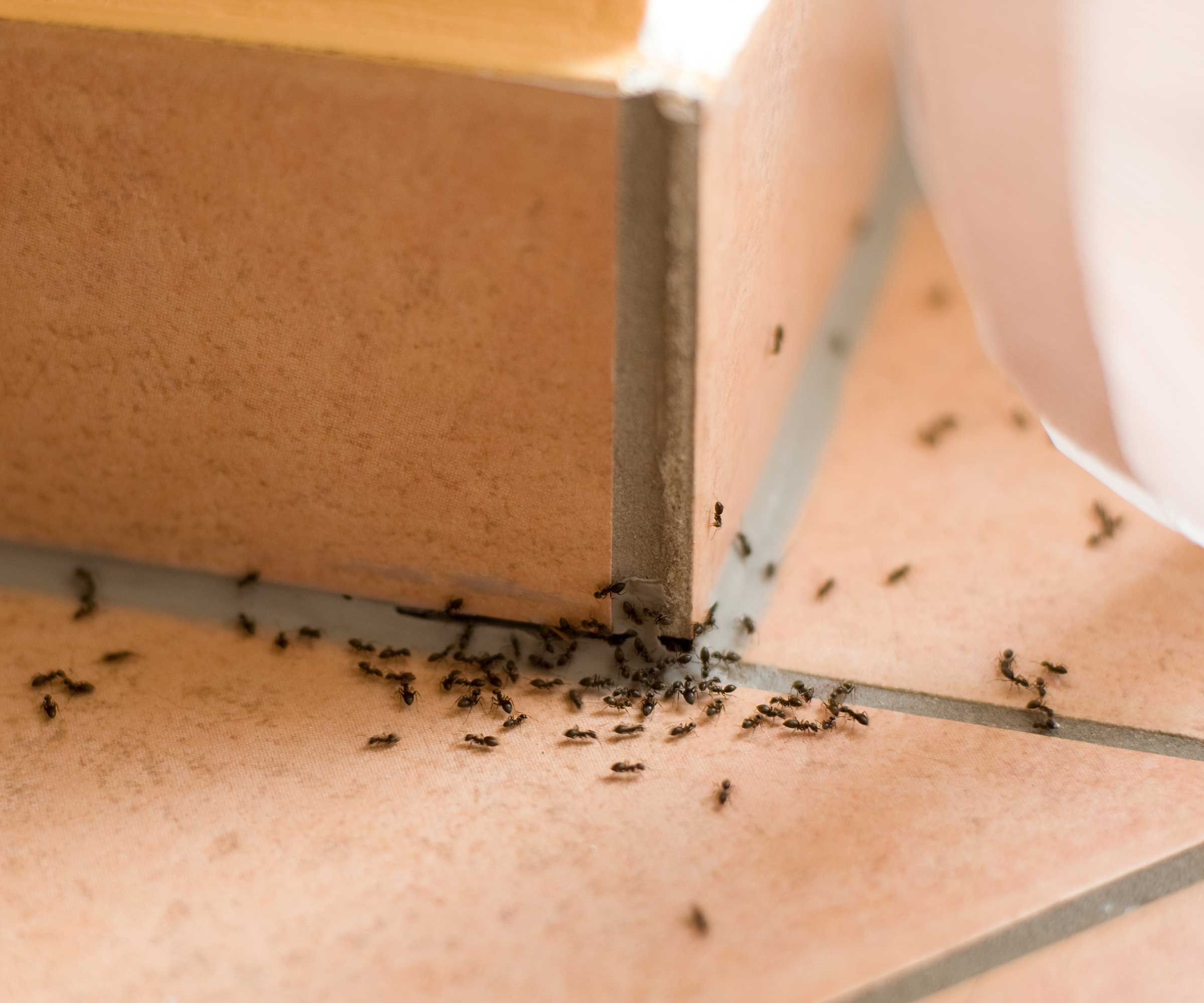
They’re tiny, annoying, and can be incredibly difficult to deal with – ants are an uber common US pest, but getting rid of them is easy once you know how and it starts with knowing what you're dealing with first.
‘There are approximately 30 ant species that will invade the interior of a home in the United States,’ says David Price, entomologist at Mosquito Joe. ‘The most popular species is the Odorous House ant, which is found across the country.’
Their name comes from the strong, rotten odor emitted when they’re crushed, so they’re easy to identify. They also have multiple queens, strengthening their colonies, and establish temporary nesting sites, which could be happening in your home. ‘They are drawn to the home’s foundation in search of water, sugar or protein, depending on dietary needs driven by environmental influences,’ says Price.
Additionally the population may become so large that there isn’t enough honeydew from aphids, their usual food sourcing, forcing them to work their way inside homes and into kitchens, pantries or bathrooms in search of food.
The Tawny Crazy Ant is also a common species, as Price points out. They are reddish-brown in color and don’t march in a straight line, differentiating them from other species. ‘These ants are primarily found in the southern United States, and prefer mealybugs and over-ripe fruit,’ says Price.
Sugar Ants build large dirt hills around their colony’s entrance, so if you see soil mounds, you’ll know what you’re dealing with. ‘They’re mostly found in the south, where it is warm and humid,’ says Price. ‘They love sugar, hence the name, and sometimes make their way into kitchens and pantries, gnawing through paper, cardboard and thin plastic containers.’
Of all ants, carpenter ants tend to be the most destructive. ‘They damage wood and build nests inside walls,’ says Peter Rania, president of Waltham Pest Control, with over 40 years of experience eliminating pests in Massachusetts. ‘They are large, black ants that swarm in the spring.’
Similar, but distinguishable due to their size is the Little Black Ant species, which are much smaller, with the same jet black or dark brown, sheeny coloring. ‘They are found throughout most of North America, especially in the eastern U.S., the Southern half of California, and the San Francisco area,’ says Price. ‘They enjoy fruits, vegetables, corn meal, greasy and oily foods, and sweets.’
The most recognizable ant species are Ghost Ants, which are unique as they have a translucent abdomen, where food can be seen, plus antenna and legs. Ghost Ants are related to Odorous House Ants, and give off a coconut odor when crushed. ‘These tropical ants are typically found in south and central Florida but can be transported in shipping crates, boxes, and potted plants to end up in Northern states, where they only survive in heated buildings and greenhouses.’
So, once you’ve identified what species of ant is invading your home, how do you go about dealing with it? There a few different options depending on the type of ant problem you're facing.
‘A liquid ant bait bought over the counter can be effective,’ says Price. ‘However, one needs to place the liquid bait station outside, where you can see the trail at the foundation or porch foundation. Most folks place them inside and draw the ants inside, making the infestation worse in many cases.’
Products such as the TERRO Outdoor Ready-to-Use Liquid Ant Bait Stake Killer Trap, available at Amazon, which has more than 164,500 4.5/5 star reviews, work effectively for this, as they stick in your grass outside killing ants effectively without enticing them inside.
‘Several over-the-counter liquid spray products can also be applied around the applied around the foundation to eliminate what you see and repel future foragers,’ says Price. We recommend the Zevo Crawling Insect Killer available at Zevo, as it is specifically formulated for crawling insects, with a no lock, continuous spray to kill in seconds, and it’s suitable for indoor and outdoor use.
Importantly though, using sprays like this will only work before an infestation, warns Price. ‘I recommend a spring application and then every two months through the summer and into fall,’ he says. ‘They will still be working during the winter months inside the colony, and randomly foraging.’
For destructive carpenter ants, Rania recommends treating the wood with boric acid powder, which is available at any hardware store, or on Amazon. This impacts their nervous system, causing dehydration and death. The powder also gets transported back to the colony on the ants, killing more of them in one go. It will likely need multiple applications. If you suspect carpenter ants, which are black and large, call in pest control to assess the extent of the problem as their nest-building activities can damage the structure of your home.
Once ants have been dealt with, there are changes you can make outside and around your home to stop them entering in the first place. Most importantly, keep moisture away from the foundation of your house by checking and sorting for leaks and making sure your drainage areas are clear. Also, keep mulch, leaf litter and vegetation at least 10-12 inches away from your walls.
‘Trim back any tree branches or shrubs touching the house so ants can’t use them as bridges,’ says Price. ‘And move any piles of lumber, firewood, bricks, and stones away from the house.’
Inside your home, clean up food spills quickly, rinse food and drink containers before placing them in the trash or recycling, remove food debris from your sink after washing dishes, and clean out strainers that collect food particles in sink drains. Also, make sure your outdoor trash has a lid to stop ants getting inside and then alerting their colony mates to join the party. Try the United Solution Store's snap lock lidded outdoor trash cans from Amazon, which are spacious and light to move around.
Food, including pet food, should be stored in airtight containers and, where needed, kept refrigerated. Clear away pet food as soon as meal times are over. Also, check over both interior and exterior taps and water sources for any leaks that could be attracting ants, and seal up any gaps, cracks or holes around windows, doors and foundations.
Using sealant is a great way to do this easily and efficiently. We recommend the #1 bestselling DAP INC White Alex Plus Acrylic Latex Caulk with Silicone available at Amazon for this, as it’s durable and easy to apply, for a crack-free finish that will keep ants out.
2. Rodents

The last pest you probably want taking up residence in your home is a rodent, which are destructive, reproduce often and carry disease. They are some of the most common roof pests, too.
‘Rodents like mice and rats contaminate food and damage property,’ says Rania. They’re present across the entire US, and identifiable by their fur and long tails. Rats are more destructive than mice, are bigger, and have longer tails. Both rats and mice have an excellent sense of smell, so storing your food correctly, and not leaving crumbs and spillages on your surfaces and floor is paramount.
They enter through gaps in your home, and mice especially can squeeze through even the tiniest of spots. They will nest away from humans, so tend to gather in dark, cluttered areas, such as a closets, attics or garages.
‘Seal entry points into the home and set snap traps or electronic repellents near walls,’ says Rania. Electronic repellents work by emitting an ultrasonic sound that keeps rodents away, and are particularly good if you don’t want to deal with any dead pests. Resist using sticky glue traps, as they’re cruel and tend to fill your home with foul odors when the rodents die.
You can also use humane traps, such as the Motel Mouse Humane Mouse Traps from Amazon, which capture the mice for release – just be sure to release them far away from your home to prevent them finding their way back in, or try using peppermint oil to get rid of mice. If you have a severe mouse infestation, or are struggling to get rid of rats, it’s probably time to call in a professional, who can deal with the problem in whatever manner you prefer.
Remember to keep your garage floor clear of debris and discarded cardboard as rodents love hiding and nesting in floor level shelter.
3. Centipedes

When it comes to identifying them, centipedes, of course, have a very distinct appearance. ‘No matter the variety, they will have a longer body equipped with lots of legs that spread out from their body,’ says Brett Bennett, director of operations at PURCOR Pest Solutions.
He continues, ‘Centipedes are a common household pest in the U.S, although I tend to see them spoken about less than other pests like mice, ants, and roaches. Centipedes will come indoors typically if there’s a plentiful source of food. I usually see them in homes that have an existing bug problem. They’re voracious hunters but also quite shy by nature, so they’re drawn to cluttered, dark, wet spots around the house. Cleaning these spots up is often the first step to getting rid of them.’
Keep centipedes out of your house by using a traditional cleaning spray as part of your cleaning routine, and consider using an additional deterrent, such as the Mighty Mint Insect and Pest Control Peppermint Oil available at Amazon, or citronella to keep centipedes away.
Don't confused centipedes with millipedes, which are completely harmless, have a more rounded appearance and legs that point toward the ground– they aren’t pests, and should be safely taken outdoors.
4. Flies
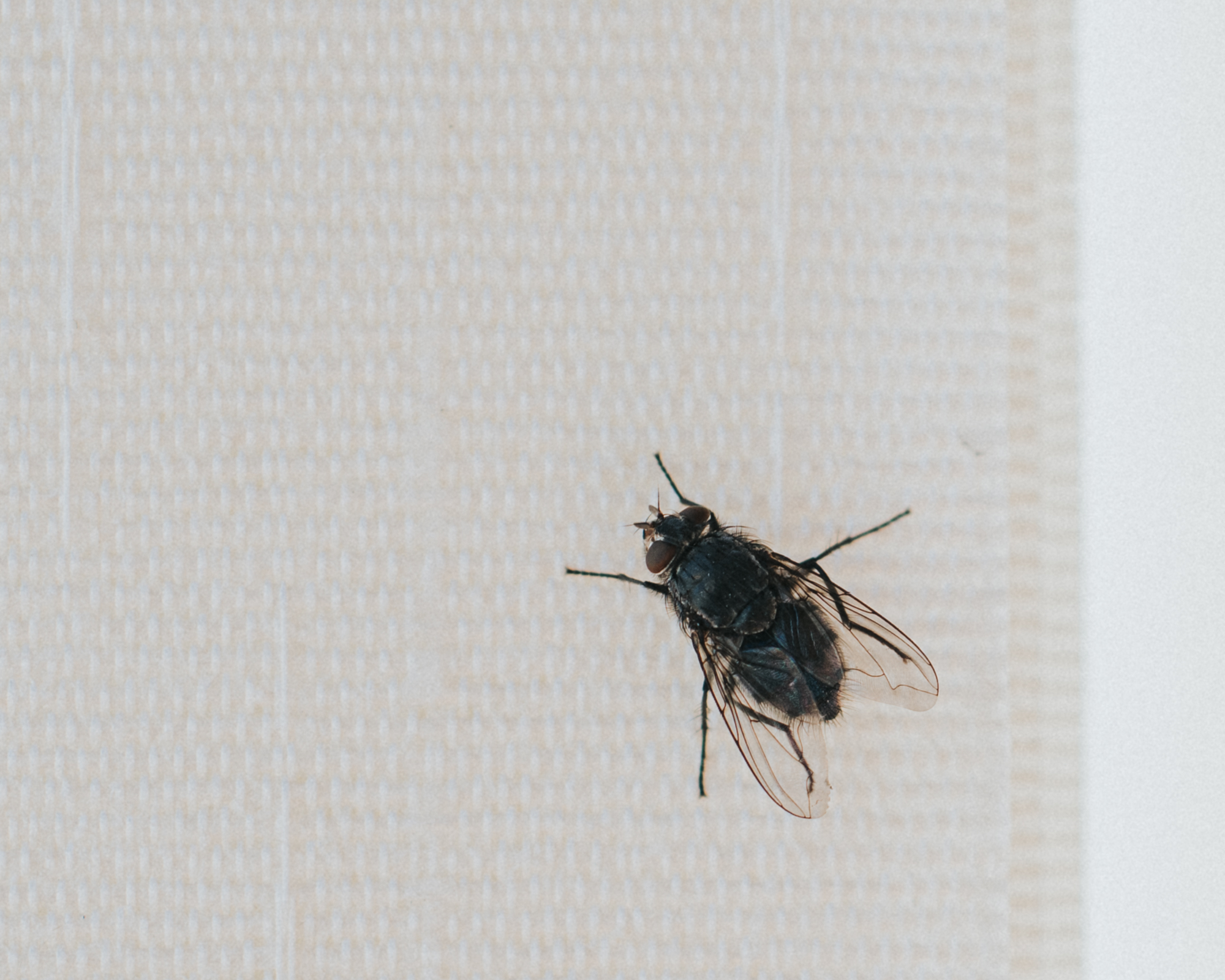
Have you been left wondering why you have so many flies in your house? ‘Flies are easily one of the most common pests that people have to deal with in the US,’ says Jeremy Yamaguchi, CEO of Lawn Love.
There are a couple of species that get indoors, and they can be difficult to deal with for one specific reason. Price explains, ‘Unlike most insects, flies have only one pair of functional wings whilst their second pair has evolved into small, balancing organs called halteres. This unique adaptation allows flies to be agile fliers, adept at rapid movements,’ and therefore difficult to swat and kill.
The most common household flies include the housefly (musca domestica), fruit fly (drosophila melanogaster), and drain fly (psychodidae). While all flies come in various different sizes and colors, they share a few common features.
‘Houseflies are typically around 6-7 mm long with a grayish body covered in fine hairs,’ says Price. ‘They have large, reddish eyes and spongy mouthparts designed for feeding on liquid substances.’
Fruit flies are much smaller, at around 3-4 mm long, with tan or light brown bodies and red eyes. They are also easy to identify as they are attracted to ripening or fermenting fruit, which you'll need to address when getting rid of fruit flies.
Drain flies are usually smaller, between 1.5-5 mm long, with a fuzzy body and wings covered in dense, fine hair, lending them a moth-like appearance. Learn how to get rid of drain flies quickly.
‘Flies are drawn to indoor environments primarily due to the availability of food, moisture, and warmth,’ says Price. Each fly, individually, is also attracted to different things, Price explains:
- Houseflies: These are opportunistic feeders and are attracted to garbage, rotting food and feces, so are drawn to decaying organic matter and can be found around trash cans or unclean kitchen areas.
- Fruit flies: These are especially attracted to overripe, fermenting, or rotting fruit and vegetables. They can also be found near spills or residues of sugary substances.
- Drain flies: These thrive in moist, organic matter typically found in drains, sewer systems, and compost piles. Their larvae feed on the organic sludge that accumulates in plumbing systems.
Flies enter the home through a variety of routes such as open doors and windows, or by hitching rides on fruit, vegetables and grocery bags. They can also enter through drainage pipes and plumbing systems.
The most important step when dealing with flies is to remove anything that might be attractive to them. ‘Compost and garbage bins are all attractive to flies, so make sure these things stay secured or located on the other side of your yard, away from your house,’ says Yamaguchi.
Make sure to also regularly clean your kitchen surfaces, garbage cans and drains with cleaning spray and insecticide, particularly for drain flies, where repairing any leaks or moisture issues in your home and using drain covers can also help. Delaying this is a common mistake when getting flies out.
To keep flies outside, Block off all entry points to your house, by repairing or installing screens on windows and doors, and sealing all gaps and cracks. Ensure food is tightly sealed in airtight containers, and crumbs and spillages are cleaned up promptly.
You can also use UV light traps and baited traps, recommends Price. ‘These can help reduce fly populations in areas where they are most problematic,’ he says. We recommend the Zevo Max Flying Insect Trap available at Zevo, as it uses the power of two traps in one device, targets specific problem areas and attracts and eliminates flies, gnats and more.
If you see a cluster of rust colored spots around lights, doorways and ceiling, clean them away as they are often fly eggs.
5. Bed bugs
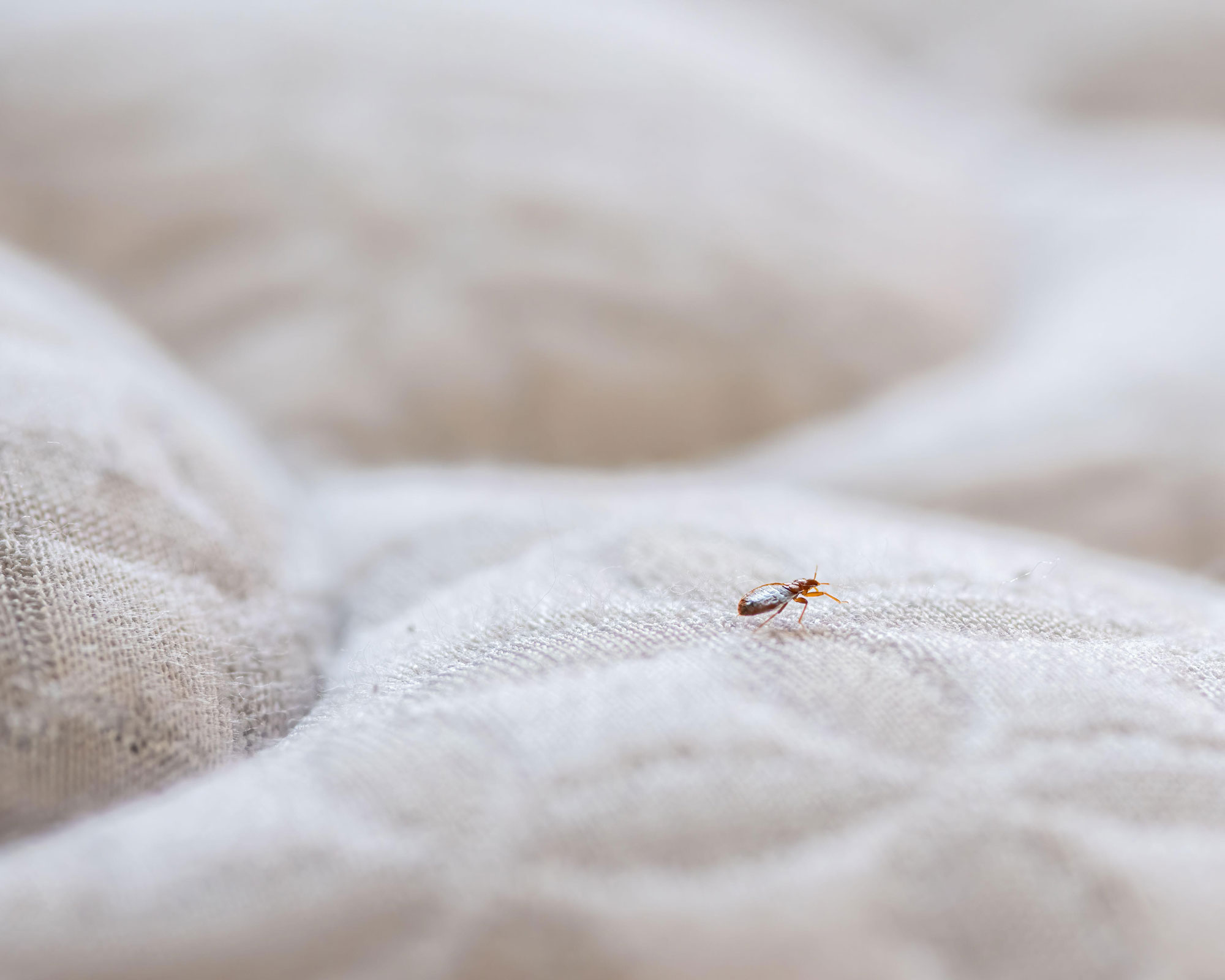
If you discover these itchy pests in your home, you will want to know how to get rid of bed bugs, and fast. From knowing which mattress protector is best for bed bugs to wondering how to prevent them for good, it's important to act fast to put an end to sleepless nights.
‘Bed bugs feed on human blood and infest mattresses and furniture,’ says Rania. ‘They are flat, oval, and brown,’ and tend to burrow into your mattress and springs, in cracks in your bedframe and headboard, and lay eggs on your bedding, which are small and reddish in appearance. They commonly enter your home on used furniture, so always thoroughly clean second-hand finds before bringing them into your home.'
They can also hitch a ride into your home in your luggage from another infestation site such as a hotel room you stayed in.
‘To get rid of them, encase mattresses, wash all linens (on a hot wash) and apply diatomaceous earth in cracks and crevices,’ adds Rania. ‘A professional heat or steam treatment may also be needed.’ Unlike other pests, pest control experts warn against using essential oils for bed bug infestations due to the need for drastic, quick action and results, so it's best to call in the professionals.
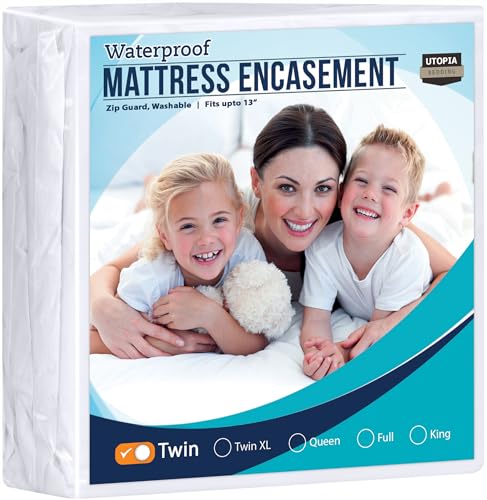
This zippered cover encases your mattress, and is 100% waterproof, to protect against bed bugs and dust mites. It's also washable, and can be put in the tumble dryer, for easy maintenance.

This diatomaceous earth is pure and undiluted, and can also be used as an anti-caking agent or food preservative. The resealable lid is handy to keep it moisture free, but remember to place the tub out of reach of children and away from pets.
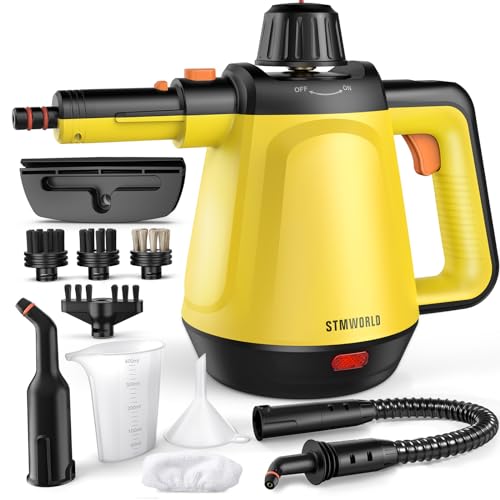
This handheld cleaner uses super-heated steam, with a 3-5 minutes fast heat up to effectively clean and remove dirt, steam and grease with a high pressure, so is perfect for eliminating bed bugs from your home
6. Silverfish

‘Silverfish have teardrop-shaped bodies and shiny, silver scales covering their bodies,’ says Georgios Liakopoulos, exterminator at Fantastic Pest Control. ‘Their distinctive appearance comes from three long bristles at the back of their bodies. While there is no relationship between silverfish and fish, they’re named for their gliding, swift movements that look like fish swimming.’
Silverfish may be mistaken for firebrats which prefer hotter climates, like attics and furnaces, whereas silverfish like cool, moist places. To spot signs of a silverfish infestation, ‘look for their silver scales and fish-like movements to tell them apart from similar insects,’ says Liakopoulos. ‘It’s amazing how long silverfish have survived, but when they show up in homes, it means there’s moisture underlying.’
If you need to know how to get rid of silverfish, don’t worry, as it’s relatively easy to do so.
As silverfish love high humidity areas where there’s a lot of moisture, they are most commonly found in bathrooms, kitchens, basements and attics, but may also gather in dark, damp places, such as underneath sinks, in cupboards or even inside walls. They typically hide in cracks and crevices, behind wallpaper, inside bookshelves and around plumbing fixtures.
‘Because they’re nocturnal and avoid light, their presence often goes unnoticed until their numbers grow,’ says Liakopoulos. ‘You’ll usually see live silverfish at night, which is a sign of infestations. There are also yellow stains, scales, and tiny droppings near infested areas.’
Though they’re small, their attraction to starchy stuff like paper, glue and textiles, means they can damage books, wallpaper, food and even cause holes in clothes. While they’re commonly said to be due to poor hygiene, that’s not true, points out Liakopoulos. ‘It’s moisture and food that attracts silverfish, not dirt and filth. If the conditions are right, even the cleanest house can get them,’ he says.
The key thing to preventing silverfish infestations is reducing humidity levels. ‘Fix leaks, use dehumidifiers, and ventilation is key. Also, seal cracks and gaps around windows, doors, and foundations to keep silverfish out,’ says Liakopoulos. You can also try natural remedies, such as diatomaceous earth, which dehydrates and kills them, lavender, citrus or cedarwood oil, available on Amazon. You can also use a sticky pad insect trap to detect silverfish activity in suspected areas.

This lavender oil is 100% pure and natural, and premium grade quality, with a potency that silverfish will hate
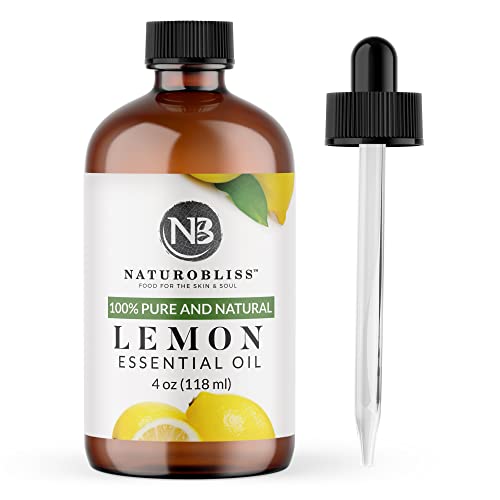
This lemon essential oil is bottled in the USA, and has been tested independently to ensure maximum efficacy. It has no fillers, no additives, and is 100% undiluted
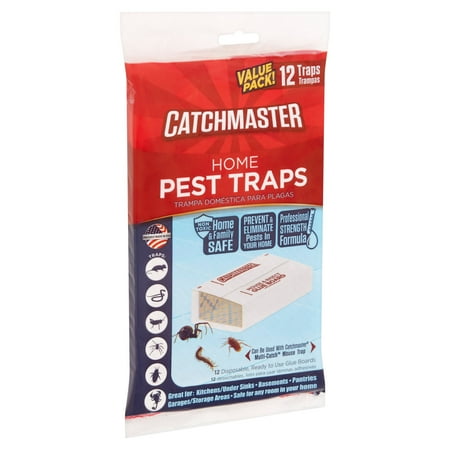
These home pest traps are scented to attract pests, and are non-toxic, so are family friendly for use all around the home
7. Termites
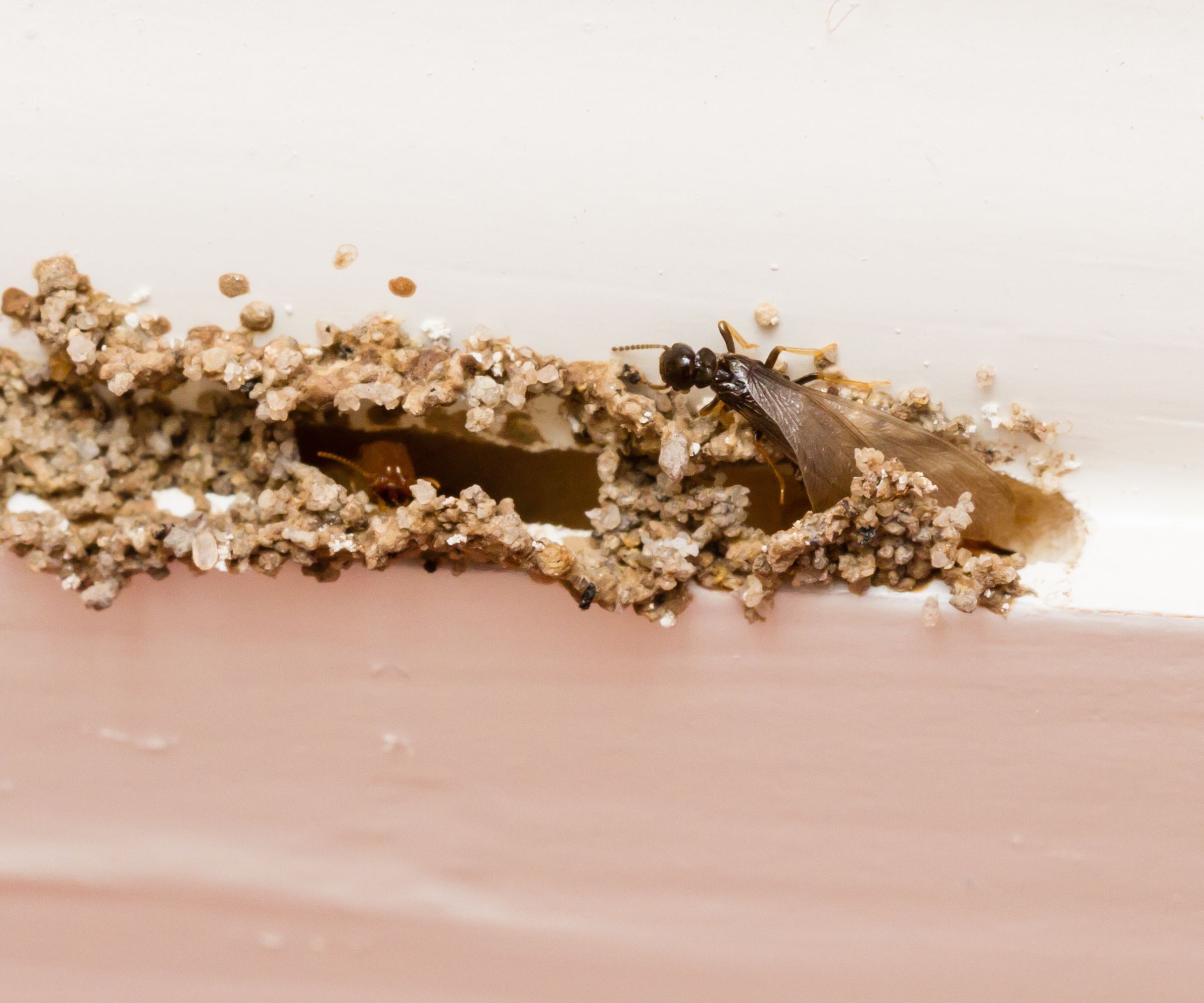
‘Termites feed on wood and infest foundations and wood structures,’ says Rania. ‘They are soft-bodied and pale-colored with straight antennae.’
While termites are a common winter backyard pest, they typically enter homes during home renovation and remodeling, or simply through cracks. They are attracted to the food, moisture and shelter a house offers, which usually mean they will stay and breed in your home. So how do you get rid of termites?
Termites eat through wood and can burrow they're way into your home, causing structural damage. They have strong mouths adapted to eating wood and need to be dealt with promptly.
‘Annual inspections and professional treatments are the best ways to prevent an infestation,’ says Rania. Professionals can apply termiticides which work effectively to kill invasions. You can also use borax powder, such as the Birch & Meadow Borax available at Amazon, which is unscented and multipurpose, and can also be used for cleaning and laundry.
Termites also make satellite colonies from rotten wood structures outside. If you have any dead trees, bushes, or logs in your yard, get rid of them to help avoid a termite infestation outdoors that could spread inside when they run out of resources.
8. Cockroaches

There are several species of cockroaches, and, while most have a preference to live and breed outdoors, one species, commonly known as the German Cockroach (blatella germanica) typically infests hot and humid areas in the house, such as kitchens and bathrooms.
‘They are a smaller cockroach, light tan to a gold color with two dark, fairly parallel streaks that stretch along their back from their head to their wings,’ says Price. ‘If found, they likely were brought inside bags and boxes, inside a suitcase, or inside used furniture or appliances, so always inspect these items before bringing them inside the home.’
Roaches come into clean homes as well as dirty and can spread from a neighboring infestation, especially in apartment or linked housing.
If you find cockroaches in your home, use an over-the-counter aerosol insect spray, or insect spray with a blend of essential oils, recommends Price. We recommend using the bestselling Raid Ant & Roach Killer from Walmart, as it kills on contact and continues to residually protect your home for six weeks. ‘You can also apply over-the-counter bait stations or gel at locations in the kitchen where it is hot and/ or humid, such as behind the refrigerator, around the stove, around the dishwasher, and under the sink at the pipe entry points. Then spray at the baseboards in each of the rooms with an over-the-counter liquid spray, or an insect spray with a blend of essential oils,’ to get rid of them, particularly from the kitchen.
9. Mosquitoes and ticks
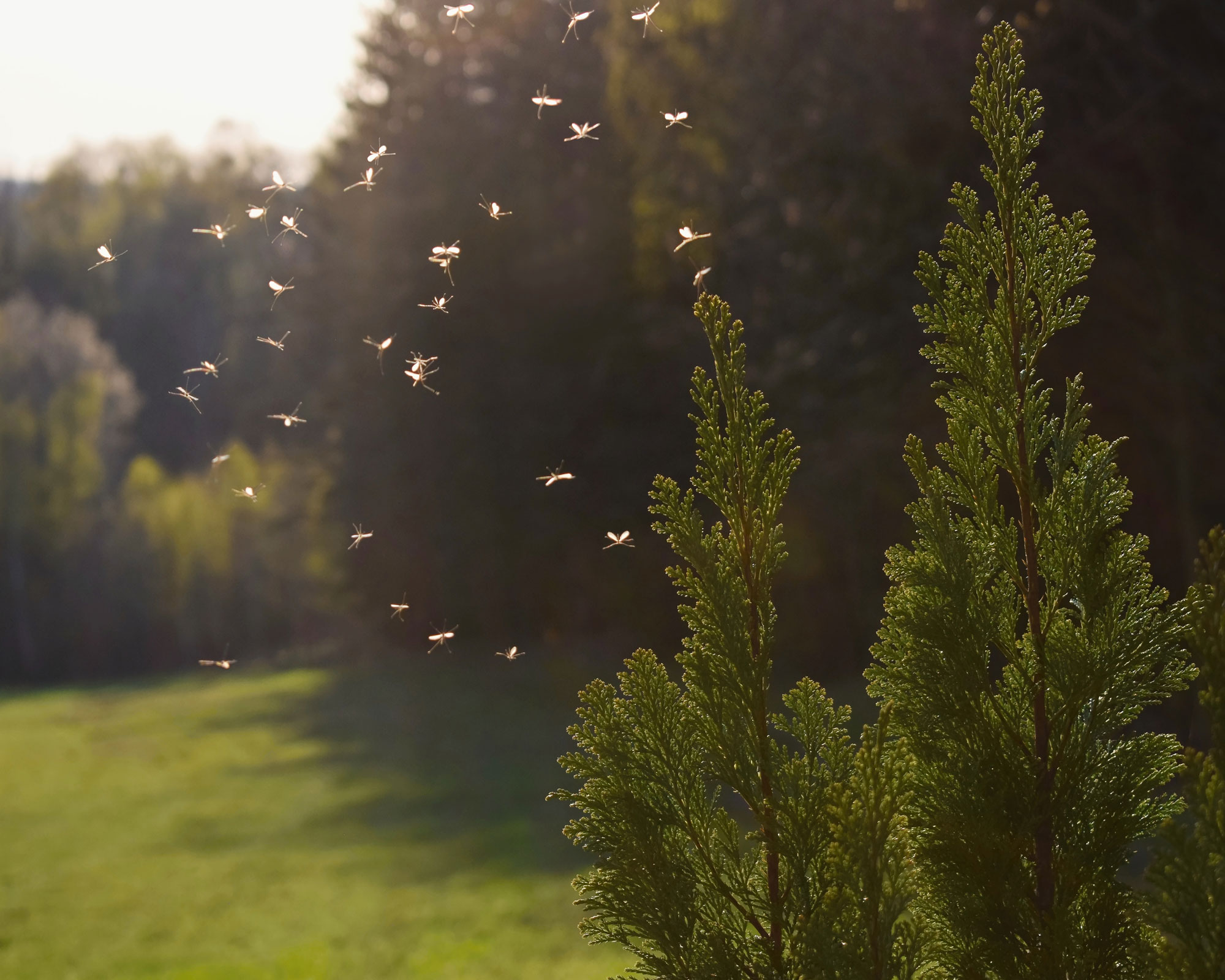
Do you regularly find yourself asking why mosquitoes love you? Mosquitoes and ticks are a real nuisance, particularly during summer, when you’ll be wanting to get rid of mosquitoes in the house and keep them away from the front door.
‘Mosquitoes and ticks spread disease as they feed on blood,’ says Rania. ‘They are small flying or crawling insects with piercing mouthparts.’ To repel and get rid of them, use EPA-registered insect repellents containing DEET or picaridin, such as the Sawyer Products Premium Insect Repellent with 20% Picaridin available at Amazon, recommends Rania.
Also, do regular yard maintenance to eliminate any standing water, where they breed, and keep windows and doors closed, to prevent them entering your home. You can also consider colors that attract or repel mosquitoes when revamping your home, to discourage the pests from entering.
10. Spiders

‘Spiders are arachnids, a class of joint-legged invertebrates that also include scorpions, ticks and mites,’ says Price. While they may not typically be classed as pests, they are usually unwanted in homes, so you may be looking for ways to keep spiders away, or how to keep spiders out of the garage.
Spiders are easily identifiable by their two main body parts (the cephalothorax and abdomen) and eight legs, with multiple eyes arranged in various patterns depending on the species. Their size and coloring will also depend on the variety, as they may be hairy, smooth or even metallic in sheen, with colors ranging from dull brown to gray, to vibrant reds and blues.
‘Several factors can attract spiders to the inside of your home,’ says Price. ‘One being food sources, as spiders are predatory and often come indoors in search of prey, as they feed on insects and other arthropods.’
The good news is, if your home has a bug problem, the presence of spiders may help control the population. They also seek safe, undisturbed environments to build their webs, so they are usually out of the way. ‘Dark corners, basements, attics, and even cluttered areas can provide the perfect habitat for spiders,’ says Price. Extreme weather conditions may also drive them indoors, and, in colder climates, they will come inside to seek warmth and dry.
Spiders, including joro spiders, enter homes through small cracks, and gaps around windows, doors and vents. ‘Even tiny openings are sufficient for spiders to gain access,’ says Price. ‘They can hitch a ride onto your home on items like firewood, cardboard boxes, or even outdoor furniture. Sometimes, spiders may have come indoors attached to pets or clothing, especially if these items have been outside.’
If you don’t want spiders in your home, there are several steps you can take to get rid of them, and stop them coming back. Firstly, it’s important to regularly clean your home, to keep it clean and clutter-free, reducing the amount of hiding places for spiders. ‘Regular vacuuming and dusting can also help to remove spiders, webs, and their eggs. Also, using a webster or cobweb duster to wipe down cobwebs outside.’
As with all pests, sealing entry points will prevent spiders from entering, and reducing the amount of availability of prey will make your home less attractive to them. ‘Make applications of over-the-counter insecticide sprays around outside lights and corners,’ says Price. ‘Spiders dislike certain natural substances. A few drops of essential oils like peppermint, eucalyptus, and tea tree oil can be mixed with water and sprayed around your home to deter spiders.’ Experts, however, warn against using WD-40 for spider prevention, and you can learn about why you shouldn't.
Also, keep your yard tidy to prevent spiders moving closer to your home. ‘Trim vegetation, remove debris, and avoid stacking firewood near the house,’ recommends Price.
FAQs
What smell will keep all bugs away?
When it comes to bug-proofing your home, smells that all bugs, and rodents, can’t abide are lavender, citronella, geranium and peppermint, which are almost among scents garden pests hate. Cleaning your home with vinegar is also an effective, natural way to keep almost all pests away, due to the strong scent and acidic nature. It also works to kill bacteria, and acts as a disinfectant, so is effective at cleaning away any germs brought in by pests. You can also try using coffee grounds to keep bugs away, which has benefits for your soil and plants too.
Once you’ve tackled the pests indoors, you might be looking for natural pest control methods to use in your garden.
Sign up to the Homes & Gardens newsletter
Design expertise in your inbox – from inspiring decorating ideas and beautiful celebrity homes to practical gardening advice and shopping round-ups.

Ottilie joined Homes & Gardens last year, after finishing a Master's in Magazine Journalism at City, University of London. With previous contributions in Livingetc and Motorsport Magazine, she produces content for the Solved section on the website, focusing on clever tips and tricks to keep your home beautiful, organized and clean. She also has an undergraduate degree in English Literature and History of Art from the University of Edinburgh, where she developed a love for inspiring interiors and architecture.
-
 How the 'ODT' method can help you to tackle your overwhelming decluttering checklist – and streamline the process from start to finish
How the 'ODT' method can help you to tackle your overwhelming decluttering checklist – and streamline the process from start to finishAvoid 'analysis paralysis' and tick off tasks quickly and easily by making just one decision at a time
By Ottilie Blackhall Published
-
 Experts say to only use homemade compost after testing it with this fail-safe method – they say it will guarantee healthy soil and support plant growth
Experts say to only use homemade compost after testing it with this fail-safe method – they say it will guarantee healthy soil and support plant growthSimply grab some fast-growing seeds and observe how they germinate in your compost
By Tenielle Jordison Published
-
 I'm a board-certified entomologist and this is the one rodent infestation control mistake I urge you to avoid at all costs – you'll regret it deeply
I'm a board-certified entomologist and this is the one rodent infestation control mistake I urge you to avoid at all costs – you'll regret it deeplyDon't put your health or home at risk
By Daniel Baldwin Published
-
 5 non-toxic mothball swaps that work – ditch chemicals and that horrible odor with these simple but effective alternatives
5 non-toxic mothball swaps that work – ditch chemicals and that horrible odor with these simple but effective alternativesThey'll protect your clothing and closets from moths without harsh chemicals
By Chiana Dickson Published
-
 5 non-toxic pest control essentials proven to prevent pests humanely – and why avoiding harsh chemicals is a must to keep your family healthy
5 non-toxic pest control essentials proven to prevent pests humanely – and why avoiding harsh chemicals is a must to keep your family healthyNatural pest repellents are more affordable, too
By Chiana Dickson Published
-
 6 hidden places pests love to harbor their young – pest control experts reveal how to stop colony growth in your home
6 hidden places pests love to harbor their young – pest control experts reveal how to stop colony growth in your homeYou can stop pests breeding in your home
By Andy van Terheyden Published
-
 How to keep stink bugs out of the house – according to entomologists
How to keep stink bugs out of the house – according to entomologistsSeal gaps, reduce plants, and use deterrents, pest experts recommend
By Ottilie Blackhall Published
-
 How to get rid of pill bugs inside your house and banish them for good
How to get rid of pill bugs inside your house and banish them for goodThough harmless, you won't want a pill bug infestation inside, entomologists warn
By Ottilie Blackhall Published
-
 How to get rid of mice in the attic – banish these pesky invaders for good with these top tips from pest control pros
How to get rid of mice in the attic – banish these pesky invaders for good with these top tips from pest control prosFrom what draws them in to how to get them out – experts reveal everything you need to know about dealing with mice in the attic
By Andy van Terheyden Published
-
 Does vinegar kill ants? Pest control pros reveal relying on this pantry staple is a big mistake
Does vinegar kill ants? Pest control pros reveal relying on this pantry staple is a big mistakeVinegar could cause a bigger pest problem
By Chiana Dickson Published